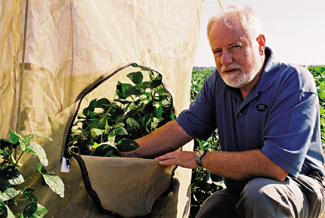
Features
Fertilizer
Seed & Chemical
Rejuvenating grass hayland with liquid fertilizers
Liquid UAN can be effective in rejuvenating grass-dominated hayland.
March 5, 2008 By Bruce Barker
Rejuvenation with liquid UAN (urea ammonium nitrate) fertilizer shows promise as a way to breath new life into an old, unproductive grass stand. Surface dribble banded UAN solution (28-0-0) may be an effective alternative, especially if rain follows the application to help move the nitrogen into the soil. That is what University of Saskatchewan soil scientist, Jeff Schoenau found in a trial on 10 year old bromegrass stands near Rosthern, Vanscoy and Colonsay, Saskatchewan. The study was conducted as an MSc. project by Bayartulga Lkhagvasuren in collaboration with Rich Szwydky and the Saskatchewan Soil Conservation Association.
| Figure 1. Forage yield response to fertilization at Vanscoy site in year of application (2005). Source: Schoenau, University of Saskatchewan. |
 |
“We wanted to look at old, unproductive stands that were grass dominated. We were looking at response to N at high rates and how different application methods might affect fertilizer use and forage yield,” says Schoenau. UAN was applied at different rates of zero, 50, 100 and 200 pounds per acre N (zero, 56, 112 and 224kg/ha N) with and without phosphorus (P) as 10-34-0 solution blended in and applied at 25 pounds per acre (28kg/ha) P2O5.
The fertilizer was either surface applied as a dribble band, or coulter injected with a coulter disc placing the fertilizer directly in the soil at a three to four centimetre depth as a band. Fertilizer treatments were applied in mid April of 2005. Forage dry matter yield measurements were made in late June or early July of 2005, and again in 2006 to assess residual effects.
First year responses impressive
Schoenau says that the 50lb/ac N rate produced close to one ton per acre (approximately two tonnes per hectare) of additional hay yield over the unfertilized controls. Increasing the N rate above 50lb/ac N mainly went to increasing protein content rather than further increases in yield. Much of the response is attributed to the added N, as there was limited response to P fertilizer.
“Fifty pounds per acre pretty much gave you all the yield response,” says Schoenau. “We didn’t see much response to P, which is similar to other studies in grass-dominated stands, and may be related to adequate mineralization of organic P in the rhizosphere.”
There was not any difference between the coulter and dribble band application methods, but Schoenau explains that there was good growing season moisture and rain shortly after application of the fertilizer which would help move the surface dribbled banded fertilizer into the soil.
 |
| Response of bromegrass in June 2005 to 100lb N and 25lb P2O5 per acre applied as liquid band in April at Rosthern, Saskatchewan. Unfertilized Check on left, fertilized treatment on right. Photo Courtesy of Jeff Schoenau, University of Saskatchewan. |
Second year response limited
In the fall of 2005, soil nitrate and phosphate supply rates were measured over a two week period using PRS probes inserted in soil cores collected. Only the super high N rate of 200 pounds per acre treatment applied in the spring of 2005 had significantly higher N supplies. There were not any differences in P fertility. In 2006, in order to assess whether yields were affected by the one-time application in 2005, no fertilizer was applied.
“You would expect to see a yield benefit in the second year with the 200 pound per acre rate because of the residual carryover. And that’s exactly what happened. The 200 pound rate applied the previous year gave another one ton per acre forage yield over the other treatments, and similar to its response in the first year,” explains Schoenau.
Schoenau says a producer can look at these results from a couple of different perspectives. With 30 to 50 pounds N per acre giving about a one ton forage yield increase, that rate could be applied annually to help keep a forage stand productive. Alternatively, if the growing season turns dry, and forage yields are poor, the results indicate that the N should carry over and be available for the forage crop the following year.
“Thirty to 50 pounds of N per acre would be an economical treatment. It took a fair bit more N applied to get a significant carryover and response for the following year as a result of the high plant uptake of the fertilizer N that occurred in the year of application for the low rates. Fertility management is sometimes overlooked on hayland, but because of the benefits to forage production and protein content observed in this study, it can be recommended as a way to breathe new life into an old forage stand,” concludes Schoenau. -end-